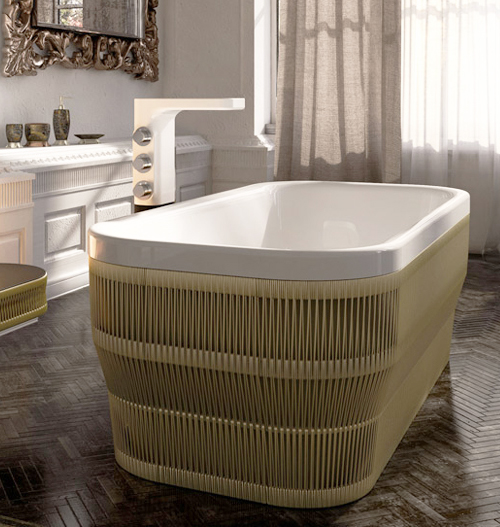If you start to read about a place like Ponte Tower, wherever you live will not seem that bad...
 |
| The Ponte Tower building in Johannesburg. Photo © flickr. |
|
 |
| Peeking into Ponte Tower on a flying tour of Johannesburg. Photo © FlyJozi. |
Ponte Tower is a 54-storey-high cylinder-shaped building that has been hovering over the skyline of Johannesburg since 1975. The sign on the top of the building is the largest sigh in the Southern hemisphere.
 |
| The inside core of Ponte Tower, looking up at the hallway windows. Photo © RabbitingOn. |
Back in the day, this extraordinary building designed by Manfred Hermer, was one of the most coveted addresses in the city. In the midst of South Africa's Apartheid era, Ponte Tower became the emblem of the country's racial segregation. Laws requiring kitchens and bathrooms to have a window, therefore he
decided to leave an open, 32,000 square foot inner core, which let light
into apartments from both sides. Only wealthy white families were allowed to live in the outward-facing apartments, while the inner apartments were reserved for their black servants, who lived in partial darkness. They put retail stores at the bottom and had plans to include an indoor
ski slope on the core floor. They built saunas and chrome bars in all
the penthouses.
 |
| A glimmer of sun shining through the core of the building. Photo © Anderson KA. |
After the fall of Apartheid the surrounding neighborhood, once an upscale area of the city, became consumed by crime. By the mid '90s, Hillbrow's murder and rape rates were worse than almost any place in the world. Despite the expansive views from every unit, the building became known for rats, guns, drugs and violence.
 |
| The Ponte Tower building in Johannesburg. Photo © flickr. |
Many downtown building owners gave up on their properties when they
weren't able to collect rent from tenants, or couldn't control the
crowds of people forcing their way into each apartment. Some apartment
complexes were "hijacked" by gangs who blocked owners from entering and
forced tenants to pay them instead.
Garbage started to pile up in the courtyard that covers the first five floors of the building. In the late 90s, it was suggested that the structure be turned into a
maximum security prison, but this idea was later discarded. At its lowest point, Ponte Tower became became known as "suicide central" because people committed suicide by jumping off from the center of the building.
Today, the Ponte Tower is still the tallest residential skyscraper in
Africa and remarkably, people are still willing to call it their home. However, there is hope for residents. In the past few years major improvements has been made to ensure the safety of the residents. In May 2007 Ponte changed ownership and a re-development project "New Ponte" was put in motion. Current resident, Manny de Costa states that even though Hillbrow is still considered one of the most dangerous neighborhoods in the world, the building itself is safe.
Currently a few renovated apartments called "Global Fusion" is up for sale. Developers are selling all of the units furnished, in styles that range
from "Future Slick" – all red, black, and chrome minimalist – to "Glam
Rock," with velvet, '60s-patterned furniture. The apartments sell from
$80,000 to $150,000. Other plans for the building includes building an indoor climbing center, a huge child-care center, restaurants, spas and even a gym.
 |
| The view from one of the newly renovated apartments. Photo © StoryOfBing. |
|
 |
| The interior of one of the newly renovated apartments. Photo © StoryOfBing. |
Sources:
www.messynessychic.com
www.csmonitor.com




.jpg)



.jpg)




.jpg)



.jpg)








